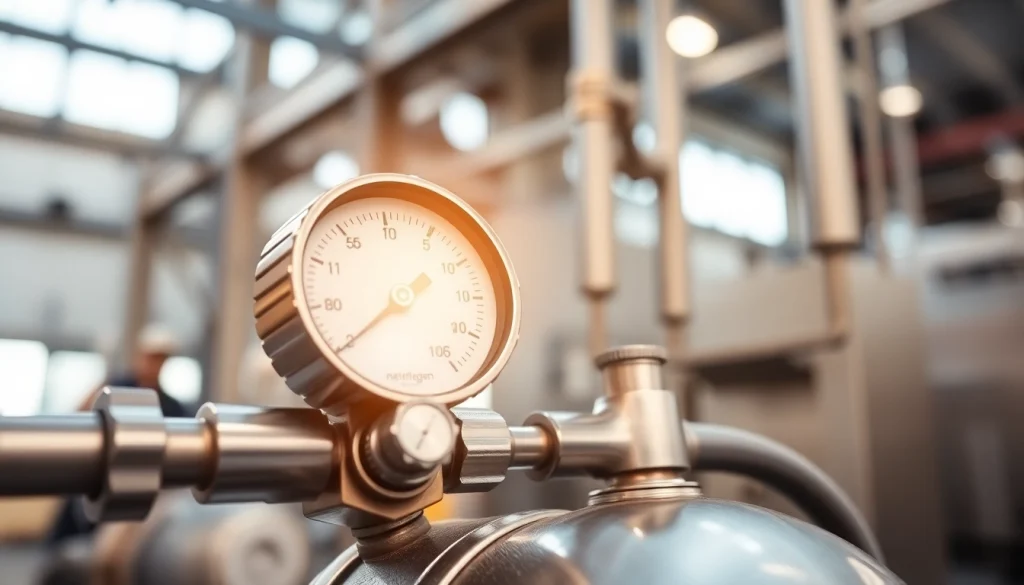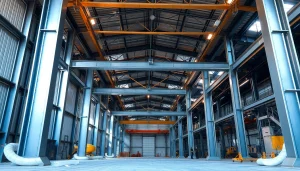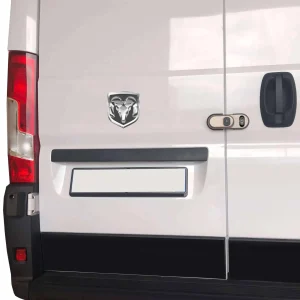Your Essential Guide to Nitrogen Regulators: Selection, Use, and Maintenance

Understanding Nitrogen Regulators
Nitrogen regulators are pivotal devices in various industries, primarily for managing the pressure of nitrogen gas in applications ranging from HVAC systems to food and beverage processing. These regulators control the flow and pressure of nitrogen, ensuring safe and efficient operation across multiple systems. For those in need of high-quality options, the nitrogen regulator market offers a plethora of choices tailored to specific needs and applications.
What is a Nitrogen Regulator?
A nitrogen regulator is a device that reduces the pressure of nitrous gas coming from a cylinder or tank. Its primary function is to deliver a consistent, controlled output pressure that is lower than the high-pressure gas inside the cylinder. This regulation is essential for minimizing risk and ensuring safe application, especially in high-pressure environments where excess pressure could lead to accidents or equipment failure.
How Does a Nitrogen Regulator Work?
The operation of a nitrogen regulator is relatively straightforward. When nitrogen gas is released from the high-pressure cylinder, it passes through the regulator. Inside the regulator, a pressure-reducing valve regulates the pressure to a set level defined by the user. This system typically includes a gauge that displays the output pressure, allowing users to monitor and adjust as necessary. The most common regulators are single-stage or dual-stage, with dual-stage regulators providing enhanced pressure stability by employing two pressure reduction mechanisms.
Benefits of Using a Nitrogen Regulator
Utilizing a nitrogen regulator has several advantages:
- Safety: Reduces risk associated with high-pressure gases, preventing accidents.
- Precision: Maintains a consistent pressure level, which is critical for sensitive applications.
- Versatility: Suitable for various applications, including HVAC systems, food processing, and chemical manufacturing.
- Cost Efficiency: Helps prevent waste of nitrogen gas by ensuring it is delivered only when needed and in precise amounts.
Choosing the Right Nitrogen Regulator
Selecting the appropriate nitrogen regulator involves considering multiple factors to ensure compatibility with intended applications. Understanding the nuances of different regulators can greatly enhance operational efficiency.
Factors to Consider When Selecting a Nitrogen Regulator
When choosing a nitrogen regulator, several critical factors should be considered:
- Pressure Range: Assess the required outlet pressure for your applications to select a regulator that can adequately meet these specifications.
- Flow Rate: Determine the necessary flow rate for your application to ensure the regulator can support efficient operation.
- Material Compatibility: Identify the materials used in the regulator to ensure compatibility with nitrogen and any other gases in use.
- Size and Weight: Consider the installation space and handling requirements, particularly in portable applications.
Different Types of Nitrogen Regulators Explained
A variety of nitrogen regulators exist, designed for specific applications. Key types include:
- Single-Stage Regulators: Ideal for applications with consistent pressure needs and lower flow rates.
- Dual-Stage Regulators: Suitable for high-flow applications with fluctuating pressure requirements, providing stable pressure even as cylinder pressure decreases.
- Specialty Regulators: Customized options for specific industries, such as food and beverage, often include additional features like integrated flow meters.
Comparing Top Brands for Nitrogen Regulators
The market offers numerous brands, each with unique features. Notable brands include:
- Victor: Renowned for its durability and reliability, ideal for welding and HVAC applications.
- Smith: Offers a diverse range of products known for precision regulation and advanced technology.
- Uniweld: Specializes in compact designs suitable for limited spaces like soft drink dispensing systems.
- McMaster-Carr: Provides an extensive selection of nitrogen regulators with varying specifications, ensuring robust options for different needs.
Installation and Setup of a Nitrogen Regulator
Installing a nitrogen regulator is a straightforward process, yet it requires careful attention to detail to ensure safety and functionality. Following proper installation protocols will maximize performance and extend the life of the regulator.
Step-by-Step Guide to Installing Your Nitrogen Regulator
Here’s a general guide to installing your nitrogen regulator:
- Gather Equipment: Ensure you have all necessary tools, including wrenches and safety gear.
- Secure the Cylinder: Ensure that the nitrogen cylinder is secured to prevent it from tipping over during installation.
- Clean Connections: Clean the threads of the regulator and the cylinder connection to prevent debris from causing leaks.
- Attach the Regulator: Screw the regulator onto the cylinder and tighten securely using an appropriate wrench—taking care not to apply excessive force.
- Check for Leaks: After installation, use soapy water to check for leaks around the connections.
Troubleshooting Common Issues During Setup
Common issues encountered during the setup process include:
- Leak Detection: If leaks are found, ensure all connections are tightened adequately and check the regulator for damage.
- Inconsistent Pressure: Inconsistent pressure could stem from incorrectly set adjustments. Reread user settings and manufacturer specifications.
- Flow Rate Issues: If flow rates do not meet expectations, verify that the regulator is compatible with the requirements of your application.
Safety Precautions When Using Nitrogen Regulators
Safety is paramount when using nitrogen regulators. Here are essential precautions to follow:
- Protective Gear: Always wear safety goggles and gloves while handling gas equipment to protect against potential leaks.
- Ventilation: Ensure the working area is well-ventilated to disperse any accidental nitrogen leaks.
- Regular Inspections: Periodically inspect the regulator and hoses for wear and tear to avoid hazardous situations.
Maintaining Your Nitrogen Regulator
Regular maintenance of your nitrogen regulator is critical to ensure reliable performance and prolong the lifespan of the equipment. Understanding best practices for maintenance helps minimize the risk of failure.
Regular Maintenance Tips for Longevity
To maintain your nitrogen regulator effectively:
- Clean Regularly: Remove debris and dirt from the regulator and connections after each use to prevent blockages.
- Inspect Gauges: Regularly check the gauges for accuracy to monitor pressure levels effectively.
- Check Seals: Inspect O-rings and seals for damage and replace them if worn to avoid leaks.
- Use Appropriately: Only use the regulator within its specified pressure ratings to avoid damaging the equipment.
How to Diagnose and Fix Common Problems
Common nitrogen regulator problems and their solutions include:
- Consistent Leaks: Check to ensure that all connections are tightened properly. Replace damaged seals if necessary.
- Inaccurate Pressure Readings: If gauges are malfunctioning, they may need recalibration or replacement.
- Flow Issues: Blockages in the regulator or hoses can impede flow. Clean thoroughly and troubleshoot the entire system.
When to Replace Your Nitrogen Regulator
Recognizing signs that your nitrogen regulator needs replacement is essential. Consider replacement if:
- The regulator shows persistent leaks that cannot be fixed.
- Gauges are damaged or consistently provide inaccurate readings.
- The regulator fails to maintain the necessary pressure levels.
- Physical signs of wear, corrosion, or damage are present.
Advanced Applications of Nitrogen Regulators
Nitrogen regulators are not only used for typical applications but also hold significant value in advanced industries. Understanding how these regulators function in specialized settings can reinforce their importance.
Using Nitrogen Regulators in HVAC Systems
In HVAC systems, nitrogen regulators are essential to test for leaks and purge systems before charging refrigerants. By providing consistent pressure, they ensure that nitrogen can efficiently flow through HVAC lines, contributing to the system’s integrity and efficiency.
Nitrogen Regulators in Food and Beverage Industries
In the food and beverage sector, nitrogen is used for packaging processes and enhancing beverage quality, especially in nitrogen-infused drinks. Regulators specific to this industry can control the gas pressure and flow, ensuring optimal carbonation levels in beverages while maintaining freshness and taste.
The Future of Nitrogen Regulators in Industrial Applications
As industries evolve, the role of nitrogen regulators will continue to adapt. Innovators are currently exploring smart regulators equipped with IoT capabilities, enabling real-time monitoring and automated adjustments. This technological advancement will not only improve efficiency but will also enhance safety and sustainability in nitrogen applications.







